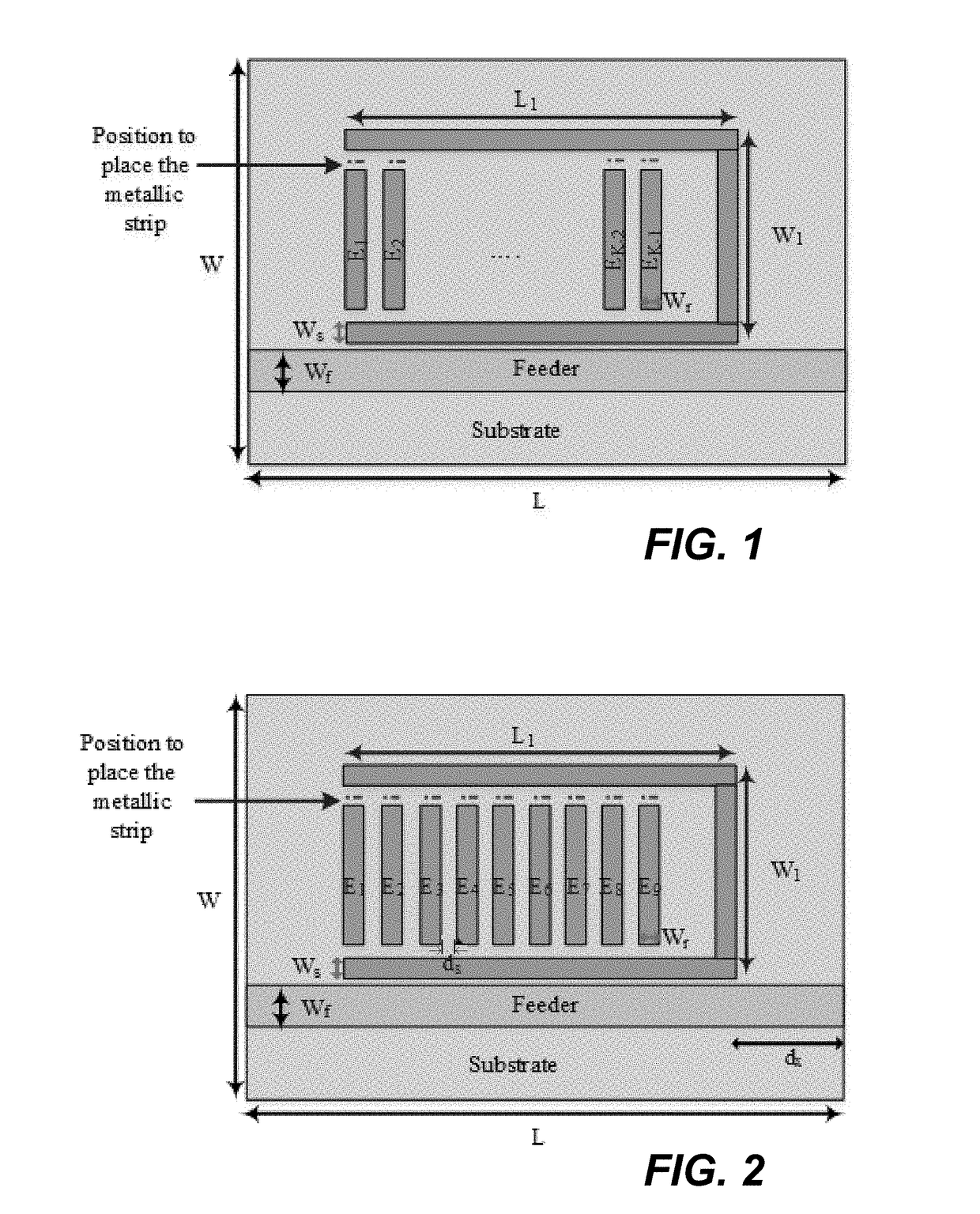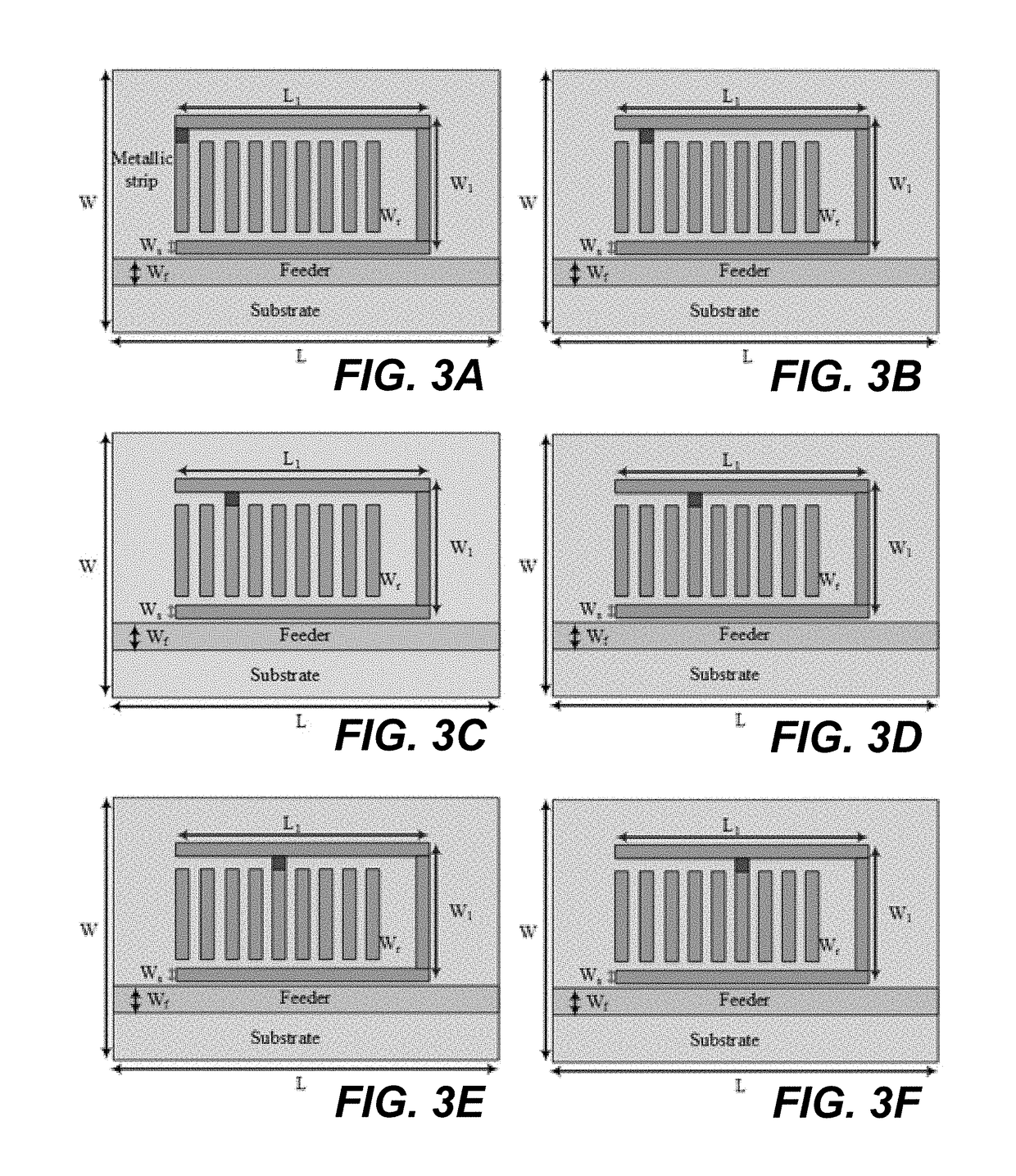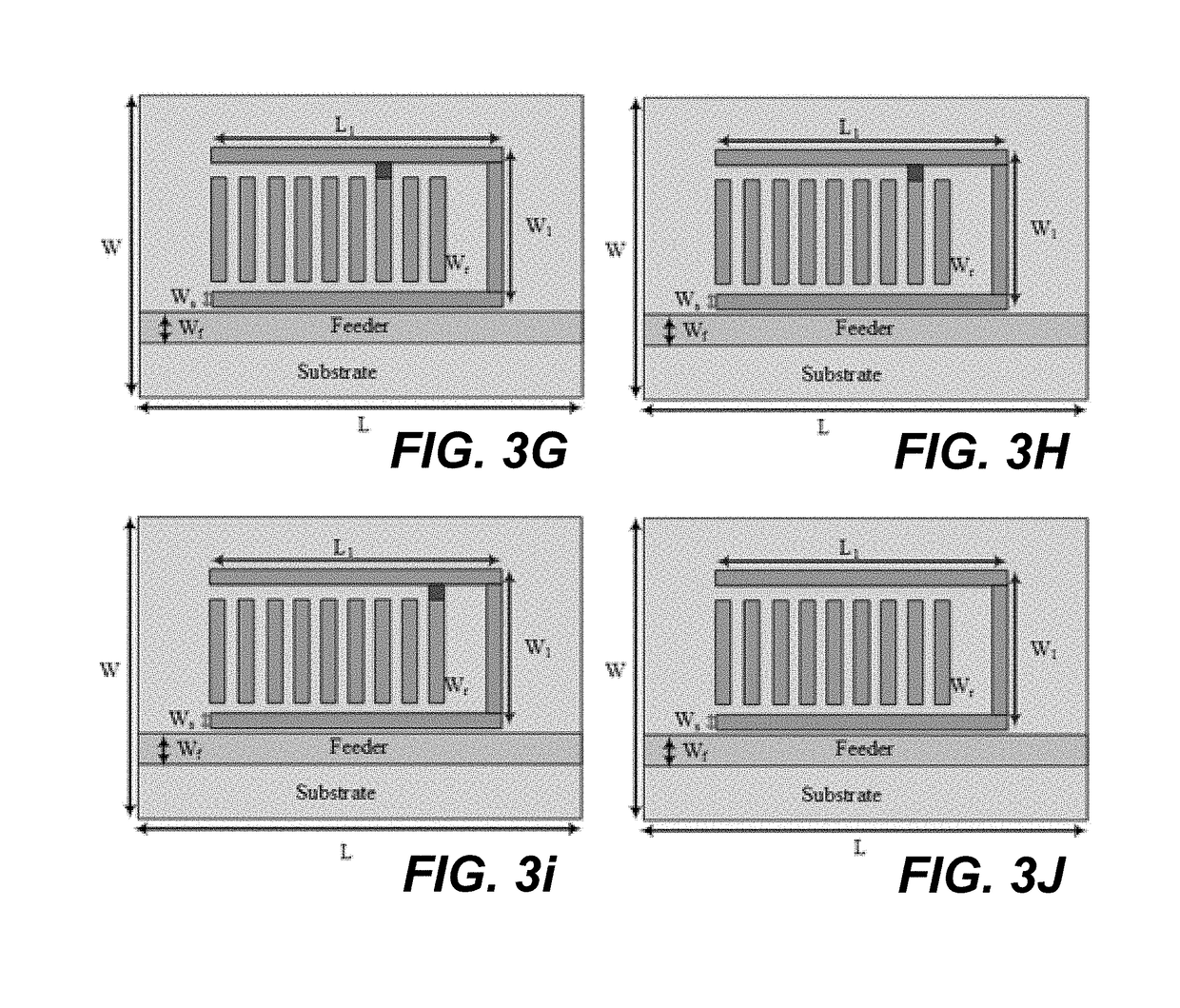Reconfigurable resonators for chipless RFID applications
a resonator and chipless technology, applied in the field of reconfigurable resonators for chipless rfid applications, can solve the problems of high tag cost, limited use of rfid tags in many applications, and the current inability to use chipless rfid tags for inventory control of low-cost products
- Summary
- Abstract
- Description
- Claims
- Application Information
AI Technical Summary
Benefits of technology
Problems solved by technology
Method used
Image
Examples
Embodiment Construction
[0019]The reconfigurable resonators for chipless RFID applications provide spiral resonators for a multiple resonator passive RFID transponder tag. Each spiral resonator includes a U-shaped frame of conductive material and has a plurality (K−1) of parallel adjusting or shorting elements disposed between the legs of the U-shaped frame. Each resonator has one leg coupled to a transmission line adapted for connection between a receiving antenna and a transmitting antenna (in some embodiments, a single antenna may be used for both receiving and transmitting), and one of the adjusting or shorting elements may be selectively connected to the opposing leg of the frame to configure the resonator to resonate at one of (K−1) different resonant frequencies (K frequencies if none of the elements are connected) by a short metal jumper strip to change the length of the spiral resonator.
[0020]When an RFID reader broadcasts an interrogation signal, it is received by the receiving antenna and modula...
PUM
 Login to View More
Login to View More Abstract
Description
Claims
Application Information
 Login to View More
Login to View More - R&D
- Intellectual Property
- Life Sciences
- Materials
- Tech Scout
- Unparalleled Data Quality
- Higher Quality Content
- 60% Fewer Hallucinations
Browse by: Latest US Patents, China's latest patents, Technical Efficacy Thesaurus, Application Domain, Technology Topic, Popular Technical Reports.
© 2025 PatSnap. All rights reserved.Legal|Privacy policy|Modern Slavery Act Transparency Statement|Sitemap|About US| Contact US: help@patsnap.com



